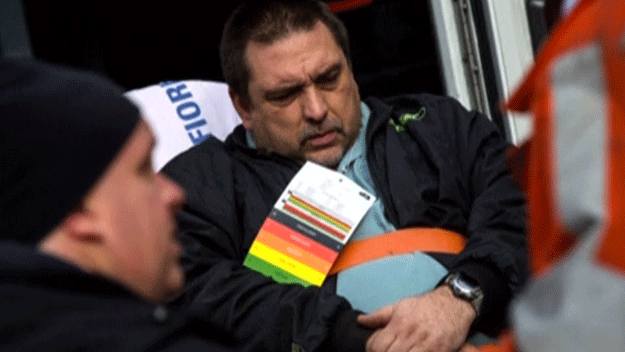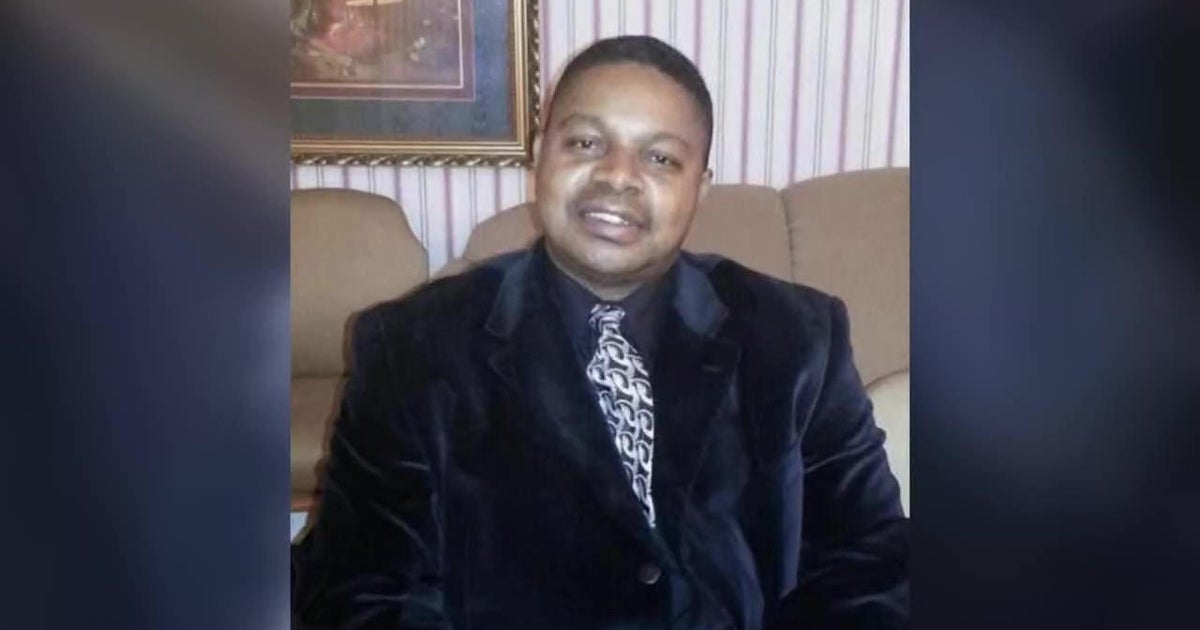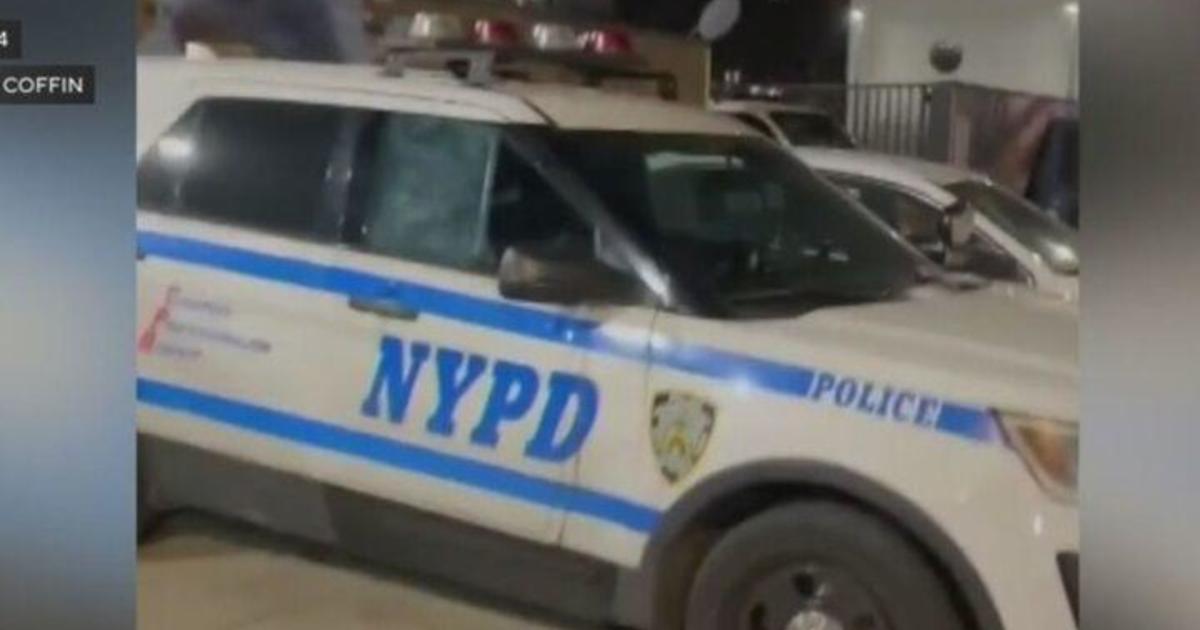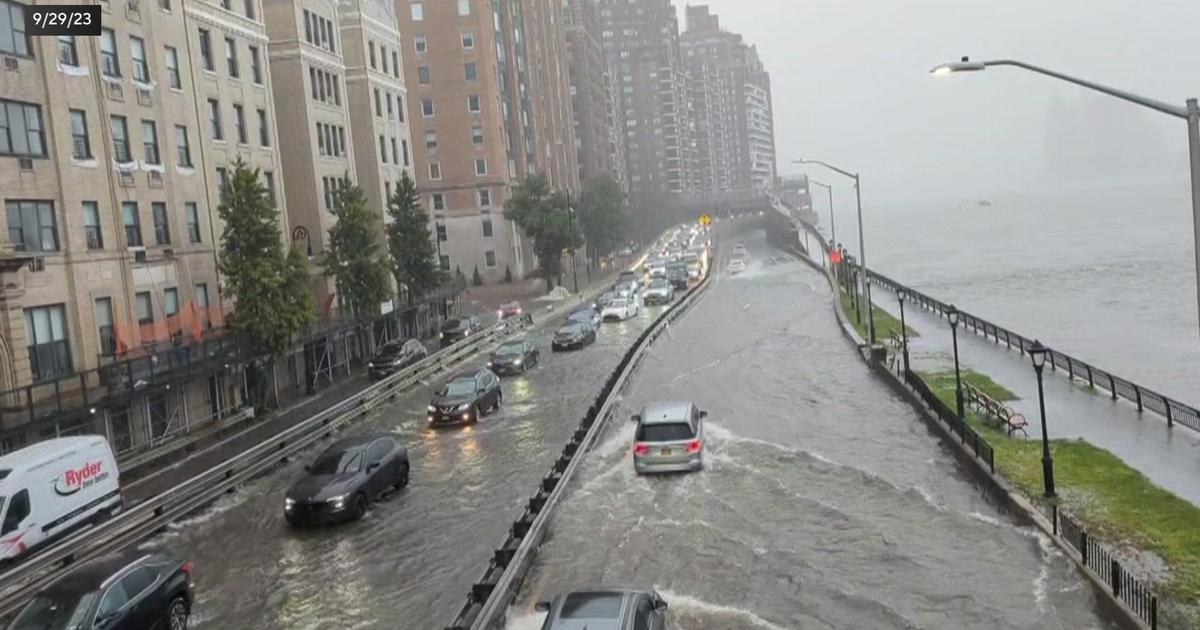NTSB Official: Metro-North Train Was Speeding At 82 Mph When It Derailed
YONKERS, N.Y. (CBSNewYork/AP) -- The Metro-North Railroad train that derailed while rounding a riverside curve in the Bronx was traveling at 82 mph at the time, a National Transportation Safety Board official said Monday.
Meanwhile, new video and FDNY radio communications from the derailment site were released Monday night.
The train derailed Sunday morning near the Spuyten Duyvil station. Four people were killed in the accident.
VIDEO: Watch The Full NTSB News Conference
Two event recorders from the train have been examined, and preliminary information indicates that the train went through the curve just ahead of the station at 82 mph, in a zone where the speed limit drops from 70 mph to 30 mph, according to NTSB board member Earl Weener.
NTSB Official: Metro-North Train Was Speeding At 82 mph When It Derailed
The NTSB also found that about 5 seconds before the engine ground to a halt, brake pressure dropped from 120 psi to 0, Weener said. Investigators still must determine the functioning of the brakes and why the throttle went to 0, he said.
But as CBS 2's Tony Aiello reported, the drop in brake pressure mean the train was going too fast, and the brakes were applied at the very last minute.
At a news conference with Weener, U.S. Sen. Charles Schumer (D-N.Y.) said he was shocked by the revelation of the train's dangerous speed.
"When I heard about the speed, I gulped. It sort of takes your breath away," Schumer said. "For a train to be going 82 mph around that curve is just a frightening thought. And the fact that it was going 82 mph even in the 70 mph zone before the curve started raises so many questions, and it's scary."
U.S. Sen. Richard Blumenthal (D-Conn.) echoed Schumer's comments, saying the speed was so dangerous as to be terrifying.
"Like Senator Schumer, when I heard about the 82 mph, my breath was taken. It's beyond frightening. It's harrowing to think that a train was going 82 mph before a curve that required a 30 mph train to slow so substantially," Blumenthal said. "Even in a 70 mph zone, 82 mph was completely unsafe. Whether the crash here occurred because of human error or equipment malfunction, that train was going way too fast, and certainly, speed was a contributing factor."
Blumenthal added that given this was the fifth major accident or malfunction on the Metro-North Railroad in just over six months, major questions have arisen about safety on the commuter railroad system.
New York Gov. Andrew Cuomo released a statement Monday evening about the discovery of the high speed.
"NTSB's finding that the train was traveling more than double the set speed limit makes clear that, as we suspected, extreme speed was a central cause of this crash. My administration will continue to work in close coordination with the NTSB in their ongoing investigation," Cuomo said in the statement. "The lives that were lost yesterday are a stark reminder that protecting the safety of all New Yorkers must be our top priority. When the investigation concludes, we will make sure that any responsible parties are held accountable. My thoughts and prayers continue to be with the families of the victims of yesterday's crash."
Also Monday, investigators began interviewing the engineer and three crewmembers Monday, Weener said.
"The interviews have started, but we won't release any records until all complete," Weener said Monday.
The train's engineer, William Rockefeller, was among those hurt.
Schumer said there did not appear to be problems with the tracks and signaling systems at the time of the derailment, which leaves only the possibilities of human or mechanical error as the cause of the crash.
But Aiello reported that human error is the greatest focus of the investigation, whether it is a question of rules ignored or procedures not followed.
Rockefeller was controlling the train from the first car, which ended up perilously close to the water's edge.
The train was being pushed by a diesel engine at the rear. The engineer reportedly told first responders when he realized the train was approaching the curve with too much speed, he pulled an emergency procedure called "dumping the brakes," which resulted in the rapid drop in psi.
City University of New York transportation expert Robert "Buzz" Paaswell said "dumping the brakes" is a last-ditch effort to lock up the wheels.
"Even if you put on an emergency stop, the train is just going to slide for thousands of feet," Paaswell explained. "It doesn't stop on a dime. I think people have to recognize that."
PHOTOS: Metro-North Train Derailment
For Rockefeller's part, the 11-year veteran engineer and Metro-North veteran of about two decades "is totally traumatized by everything that has happened,'' said Anthony Bottalico, executive director of the Association of Commuter Rail Employees, the union representing all the crew members.
He said Rockefeller, 46, was "cooperating fully to get to root cause'' of the wreck.
"He's a sincere human being with an impeccable record, that I know of. He's diligent and competent,'' Bottalico said.
Feds Seek Cause Of Deadly Metro-North Crash
The investigation team on Monday also released new ground-level video that dramatically illustrated the violence the passengers and crew endured.
Train cars toppled on their sides, and passenger compartments were left dented, gashed and scraped. Train tracks were left twisted and tangled as tons of metal and steel rolled out of control.
Weener said other data, such as surveillance videos, were still being examined as of Monday.
Feds Seek Cause Of Deadly Metro-North Crash
The NTSB said its investigators could spend up to 10 days probing all aspects of the accident, and it will be a year afterward before probably cause and analysis are complete.
Video Shows Shocking Wreckage
On Monday night, the Metropolitan Transportation Authority released new video from the accident site as workers began removing the disabled trains.
As CBS 2's Lou Young reported, it was a chilling close-up look from the accident scene, as workers began removing the derailed train cars even before the sun came up Monday.
The toppled cars were lined up one after the other, gouged and dented, and offering physical proof of the speed and power of the accident.
Each one was righted and removed a day and a half after the crash.
The locomotive was still applying power before the cars it was pushing left the rails, CBS 2 has learned. One of the car's wheels was left buried in the stone rail bed, while another car came to rest perpendicular to the tracks.
The broken tracks themselves were fractured and pushed in all directions.
Radio recordings of emergency workers rushing to the scene Sunday also have been released.
"We have roughly five cars stranded from the train, turned on its side," a first responder says in a call. "We have multiple people trapped."
All the cars were rerailed before they were hauled away Monday night -- the lead car, weighing upwards of 84,000 pounds, was the last one to be rerailed. Cranes on each end helped lift the car and lower it gently back onto the tracks.
All Train Cars Have Been Righted Following Deadly Derailment
NYPD Emergency Service Unit members went to the area where the lead car had been lying and used rakes and pitchforks to sift through the dirt, looking for any evidence.
Nearby, an Amtrak train emitted a mournful-sounding horn as it slowly passed along the Hudson River.
"I think everyone here is kind of shocked and absolutely rededicated to straightening up and improving our safety. We are really traumatized, I think is the right word. Everyone I know at the railroad is in shock," MTA spokeswoman Marjorie Anders told WCBS 880 on Monday afternoon.
The Victims
About 150 people were on board when the train derailed. Four people were killed and about 60 were injured. Metro-North Railroad spokesman Aaron Donovan said the railroad believed everyone aboard has been accounted for.
Mayor Michael Bloomberg said 11 patients initially in critical condition did not appear to have life-threatening injuries.
While many survivors had been discharged from hospitals by Monday afternoon, eight were still at St. Barnabas Hospital -- some in the intensive care unit with spinal injuries, according to Dr. David Listman, the emergency department director.
Six patients remained in at NewYork-Presbyterian Columbia University Medical Center as of late Monday afternoon, hospital officials said. Two were reported in critical condition.
The MTA identified those killed Sunday as Donna L. Smith, 54, of Newburgh; James G. Lovell, 58, of Cold Spring; James M. Ferrari, 59, of Montrose; and Kisook Ahn, 35, of Queens.
Three of the dead were found outside the train, and one was found inside, authorities said. Autopsies were to be conducted Monday by the New York City Medical Examiner's office, but results were not immediately available.
Derailment Hampers Commute
Ahead of the Monday morning commute, the 26,000 weekday riders on the Hudson line to brace for crowded trains -- in a trend that could continue for some time to come.
The MTA provided shuttle buses Monday to ferry passengers between stops and to the Harlem line, but urged riders who could work from home to do so.
LINKS: Check Traffic | Metro-North
"We'd like to get service up toward the end of the week,'' Cuomo said.
Donovan said no major delays were reported during the early part of the rush hour.
'Save Money And Safety Second'
A former Metro-North maintenance worker told WCBS 880's Peter Haskell the railroad cuts corners to save money.
William Herbert's wife, Maria Herbert, was an assistant conductor on the derailed train. She was injured and taken to the hospital to be checked out, he said.
"Thank God she's alive," said Herbert.
Herbert said he worked in the maintenance department for 25 years and said the fatal crash was an accident waiting to happen.
Former MNR Maintenance Worker Not Surprised By Fatal Incident
"I mean, everybody that I know, my friends that work there, are surprised that something like this didn't happen sooner," Herbert told Haskell. "When I worked there, and I'm sure it's the same thing, it's like save money and safety second. And they always say safety first and that's not the case."
NTSB Urges Railroad Technology
As deadly as the derailment was, the toll could have been far greater had it happened on a weekday, or had the lead car plunged into the water instead of nearing it. The train was about half-full at the time of the crash, rail officials said.
For decades, the NTSB has been urging railroads to install technology that can stop derailing caused by excessive speed, along with other problems.
Feds Seek Cause Of Deadly Metro-North Crash
A rail safety law passed by Congress in 2008 gave commuter and freight railroads until the end of 2015 to install the systems, known as positive train control.
PTC is aimed at preventing human error, the cause of about 40 percent of train accidents. But the systems are expensive and complicated. Railroads are trying to push back the installation deadline another five to seven years.
Metro-North is in the process of installing the technology. It now has what's called an "automatic train control'' signal system, which automatically applies the brakes if an engineer fails to respond to an alert that indicates excessive speed.
Such systems can slow trains in some circumstances but not bring them to a halt, said Grady Cothen, a former Federal Railroad Administration safety official.
Sunday's accident came six months after an eastbound train derailed in Bridgeport, Conn., and was struck by a westbound train. The crash injured 73 passengers, two engineers and a conductor.
In July, a freight train full of garbage derailed on the same Metro-North line near the site of Sunday's wreckage.
Check Out These Other Stories From CBSNewYork.com:
(TM and © Copyright 2013 CBS Radio Inc. and its relevant subsidiaries. CBS RADIO and EYE Logo TM and Copyright 2013 CBS Broadcasting Inc. Used under license. All Rights Reserved. This material may not be published, broadcast, rewritten, or redistributed. The Associated Press contributed to this report.)





